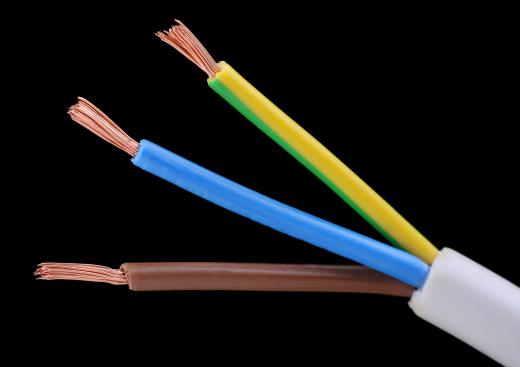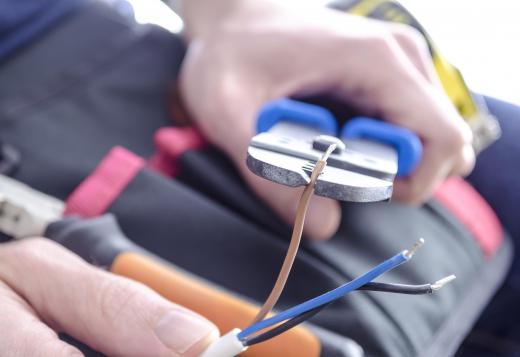Wire cutters are a tool designed specifically for the purpose of cutting wire. There are several variations on the basic design, including versions of varying weights designed for wires of different thicknesses. Many hardware stores carry wire cutters, and they are also available through stores which stock equipment for electricians, jewelers, and other professionals who work with wires. This tool can be very useful to keep around the house, and many generic versions are available to stock home toolboxes.
Also known as snips or diagonal pliers, these cutters are designed in a style similar to pliers, except that instead of grips, the tool has sharpened edges which cut through wire. The bigger and heavier the cutters, the heavier the gauge of wire they can handle. Wire cutters can also have insulated handles, which may be useful in some applications, and some may include a wire stripper so that people can strip and cut wire with the same tool, which is useful for electricians.

Basic wire cutters simply create a blunt cut through the wire. Flush cut wire cutters are designed for situations in which people want to create a cut as close to the edge of something as possible, allowing the cutters to be butted right up against an object to snip the wire. Bezel cutters create a slightly different edge on the end of the snipped wire, and are most commonly see in use by jewelers.

Really tough cutters can be used in industrial settings where heavy gauge wire is used. This type is often included in rescue kits so that first responders have a tool which they can use to quickly cut through wires on the scene of an incident, along with bolt cutters which can handle bolts, padlocks, and so forth. Such cutters often have thick, insulated handles to make them easier to handle, and some physical strength may be required to operate them.

A good pair of wire cutters can sometimes be pricey, but the price is considered worth it for a reliable tool. People can prolong the life of a pair of cutters by making sure that they are stored in a dry location and wiped down after use if they are used in wet or messy environments. It is also a good idea to periodically oil the joint of the cutters, so that they will operate smoothly and without snagging. Snagging can create rough edges which may scratch people.
Ever since she began contributing to the site several years ago, Mary has embraced the exciting challenge of being a About Mechanics researcher and writer. Mary has a liberal arts degree from Goddard College and spends her free time reading, cooking, and exploring the great outdoors.

